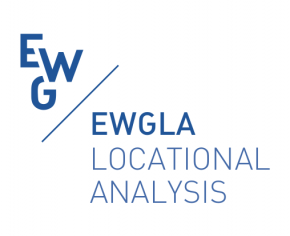 Michael McCormick
Michael McCormick
Institution: N/A
Country: Australia
Interests: Strategic urban planning using gravity models or facility location analysis
Website: http://N/A
I have graduated from Curtin University in Western Australia with a post graduate diploma of urban and regional planning. I am now interested in researching and studying gravity models and facility location analysis in order to better strategically plan the urban environment especially with regards to local commercial centres and their surrounding residential populations/residences/areas.
My university thesis or research dissertation was on the topic of whether local commercial centres can increase a sense of community within a neighbourhood or suburb and I found that this was fundamentally true from my research conducted via two surveys of people who visited two different commercial centres in Perth. I also found that it depends upon the size of the centre as well as residential densities and the type of facilities that are there. But in the interests of variety I think that the developer should be given the option by the urban planner or appropriate government department to install whatever size facility they think is necessary. And this is where proper facility location analysis can help to attain the surrounding population or area given a certain density requirement by the government department such as the department of planning.
Furthermore, I think that models such as the Lowry model and the Lakshmanan and Hansen model, which are based off Walter Christaller's Central Place Theory equations, could be improved upon because they use past or current data to forecast into the future. (I.e., given a certain sized centre they forecast a certain sized population and area based upon the ratio of the size of the city's population and the total amount of employment at these centres or the total area of these centres in the city, (g), and the average cost of the trip to the centre, (cij). And other models that are based off these then essentially state that their answer is statistically correct if it is similar or the same as the past data).
But I think that using past data would only result in more of the same sort of thing rather than using some optimum value for g or cij (in the case of the Lowry model for example). I.e., I think that using past data for g and cij would mean that the resultant population or area would probably allow the developer to survive economically, it would be feasible, and make a profit, and the consumer or local resident would have a more convenient trip to the commercial centre and it would lower the cost of the trip, but I think that using optimum values for g or cij would allow the developer to maximize their profits, rather than simply making a profit, given constraints such as an optimum value for cij that would make it most convenient for customers or local residents to get to the commercial centre and also minimizes their costs given their average incomes.
However, how would one find the optimum values for g and cij? This could probably be proven mathematically somehow or else one could use a test case where one could build a set of new suburbs all of which have the same sized commercial centres and all else being the same except they would have different sized surrounding populations or areas in order to gauge which of these would maximize profits for the developer and minimize costs to the consumer or resident and thus obtain a rough optimum estimate for g and cij. But I think this would be impractical and it would be better and more precise to prove it mathematically some how. Thus, this is an avenue for further research on my part and I would be happy if anyone could help me with this problem. Perhaps it has already been solved?
I have had a look at the LOLOLA tutorial and I believe that it may solve the problem. 

